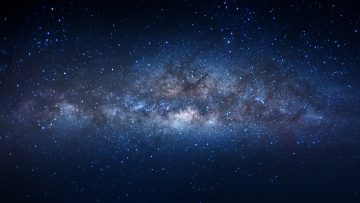Using the Chandra X-ray Observatory and the Hubble Space Telescope, NASA has captured new insight into a black hole duo found at the center of two colliding galaxies. The two supermassive black holes are currently dancing around each other, engorged with the infalling gas and material of their colliding galactic homes.
NASA says they are roughly 300 light-years apart, making them the closest detected active galactic nuclei (AGN) pair we have ever observed in X-ray and visible-light wavelengths. While not the first dual black holes that scientists have discovered, this AGN pair is separated by far less space than any other pair we’ve detected thus far.
As such, this black hole duo has garnered quite a bit of attention from scientists. These types of mergers—when two supermassive black holes become one—are not uncommon, though they definitely happened more in the early universe, when galaxies were colliding and merging together more frequently. This discovery is special, though, because it gives us a close look at the phenomenon since the galaxies are only 800 million light-years away.
That is, of course, still a very long way from Earth. As such, Chandra and Hubble had to look far back into time and space to get even a glimpse of this event. This means it is likely that the black holes have already collided and become one, but the light from the collision has yet to reach us.
Some of the astronomers involved in the discovery say they were not expecting to see anything like this while observing the merging galaxies. This view is not exactly common in our nearby universe, as many of the galaxies closer to us are still moving along their collision courses—the Milky Way will one day collide with a neighboring galaxy, and it’s likely our black hole will join another, becoming yet another black hole duo, at least for a time.
The astronomers shared their findings in a paper published in The Astrophysical Journal this month. You can read more about their discovery there.








